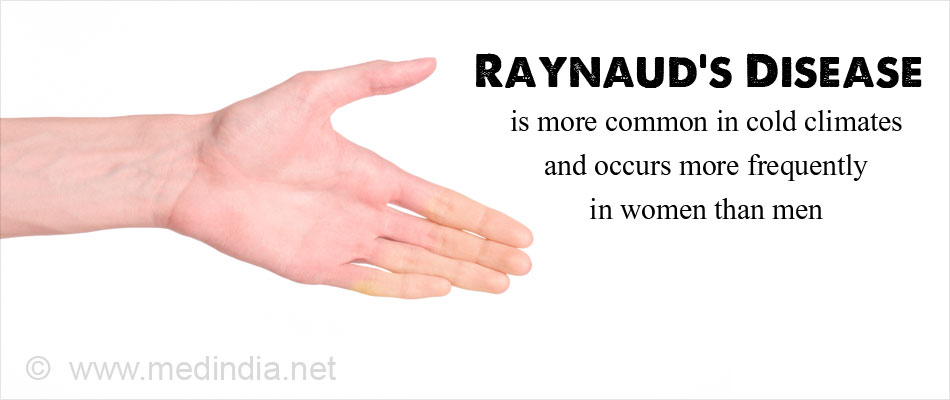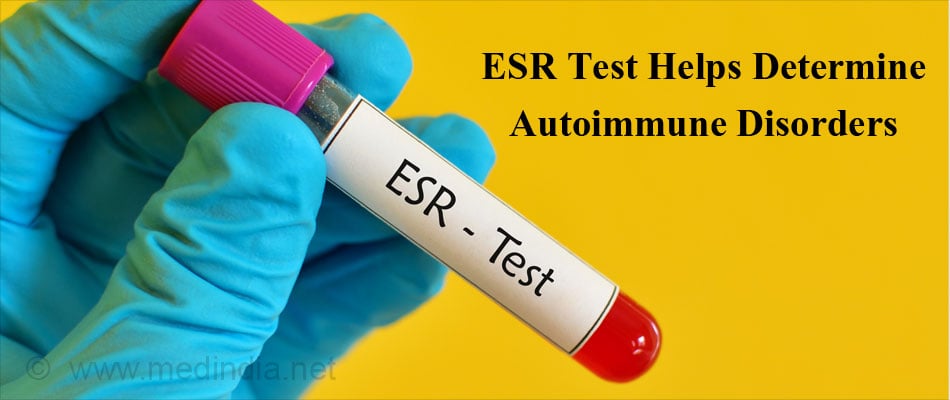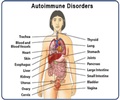- Raynaud's disease - Definition - (http://www.mayoclinic.org/diseases-conditions/raynauds-disease/basics/definition/con-20022916)
- What Are the Signs and Symptoms of Raynaud's? - (https://www.nhlbi.nih.gov/health/health-topics/topics/raynaud/signs)
- Raynaud's Disease - (https://medlineplus.gov/raynaudsdisease.html)
- What Is Raynaud's? - (http://www.raynauds.org/)
What is Raynaud’s?
Raynaud’s (pronounced Ray-Nohz) is a rare disorder of the blood vessels making some parts of the body, especially the fingers and toes, to become numb and cold in response to cold temperature or stress. Raynaud’s is named after the French physician, Maurice Raynaud who first recognized this disease.
In this condition, the small arteries supplying blood to the skin undergo spasm and restrict blood flow to the affected parts like the fingers, toes, nose or ears. During the spasm, the affected area turns white and then blue. The attack is usually painful and followed by some swelling and redness. Attacks usually last from a few minutes to a few hours. In severe cases, the attacks can lead to ulcerations and even gangrene.

What is the Cause of Raynaud’s?
Primary Raynaud’s is not associated with any other disorder, and therefore has no underlying cause.
Secondary Raynaud’s has close connections to autoimmune disorders such as:
- Scleroderma – or systemic sclerosis which is an autoimmune connective tissue disorder causing hardening of the skin
- Lupus – is also a chronic, autoimmune disease which attacks the connective tissues including the skin
- Rheumatoid arthritis – is an autoimmune condition where the joints are chronically inflamed.
Other conditions that may also be associated with secondary Raynaud’s include:
- Viral infections like hepatitis B and hepatitis C
- Blood cancers like lymphoma and multiple myeloma
- Intake of medications like sumatriptan and beta blockers, or illegal drugs like cocaine and amphetamine
- The use of vibrating tools, or injury to the hands or feet
- Smoking
- Diseases affecting arteries like atherosclerosis and Beuger’s disease
- Carpal tunnel syndrome, a condition that compresses the nerve supplying to the hand at the wrist.

What are the Symptoms of Raynaud’s?
People with Raynaud’s usually experience attacks due to cold temperatures, anxiety or emotional stress.
Raynaud’s affects fingers, toes, nose, ears and lips. An attack can last from a few minutes to a few hours.
During the attack, the arteries narrow thereby reducing the blood flow to the affected areas. This leads to symptoms like:
- Numbness with acute pain or throbbing in the affected parts
- Change in color from pale to white to blue
- Redness, soreness, tingling and burning as the blood flow returns
In the case of secondary Raynaud’s, there is a risk of skin sores which can consequently lead to ulcers or gangrene. These need to be watched and the sores should be covered with appropriate dressing. The patient may also need oral antibiotics for infection.
How is Raynaud’s Diagnosed?
While there is no single blood test or diagnostic test to determine if one has Raynaud’s, doctors usually do a first-in-line clinical examination like examining the nail fold (skin at the base of the fingernail) under a microscope. If he/she finds blood vessels enlarged or deformed, this may be a sign of Raynaud’s.
The doctor will also find clues in your medical history and other underlying diseases you might have had. If the doctor suspects that you have secondary Raynaud’s due to autoimmune or connective tissue disorders, he/she may recommend the following tests:
- ANA (Antinuclear antibodies test) – The presence of antinuclear antibodies indicates that the person is suffering from an autoimmune or other connective tissue disorders.
- ESR (Erythrocyte sedimentation rate) – ESR determines the rate at which the red blood cells settle at the bottom of the tube. An abnormal ESR could indicate the presence of an autoimmune disorder.

- CBC - A complete blood count helps to rule out underlying infections.
How is Raynaud’s Treated?
Raynaud’s can be treated at home with a few simple precautions. In some cases, you might need certain medications. Treatment should be towards preventing repeated attacks and tissue damage.
Try the following tips to reduce the frequency of your attacks:
- Make sure you keep your whole body warm. Try using gloves for your hands and socks for your feet.
- Make sure to stop smoking and cut back on alcohol.
- Reduce your stress levels with proper relaxation techniques like yoga and meditation.
- Avoid stimulants like coffee, tea and colas.
- Get regular exercise to improve your overall blood circulation.

Medications may be required in some cases. The usual medications prescribed are:
- Vasodilators relax blood vessels. These may be in the form of creams applied to the fingers and toes to heal the sores. Prostaglandins may also be helpful.
- Calcium channel blockers like nifedipine relax and dilate the blood vessels in the hands and feet. These usually reduce the frequency of attacks and also heal ulcers.
- Alpha blockers – Drugs like prazosin and doxazosin usually counter the action of norepinephrine, a chemical in the blood that which constricts (tightens) the blood vessels.
If you have been diagnosed with Raynaud’s, your doctor may inform you to stay off certain drugs like over-the-counter cold medicines and beta blockers.
How can I prevent Attacks of Raynaud’s?
The only way to prevent Raynaud’s is to avoid cold climes. If it is inevitable or you live in a cold climate, make sure you always keep warm. Try thermals to protect your hands and feet. Use a room heater if possible. Do not stay too long outdoors in the cold wind. Opt out of air conditioned spaces; Try an air cooler instead during summers. These simple measures can at least reduce the frequency of painful attacks.






